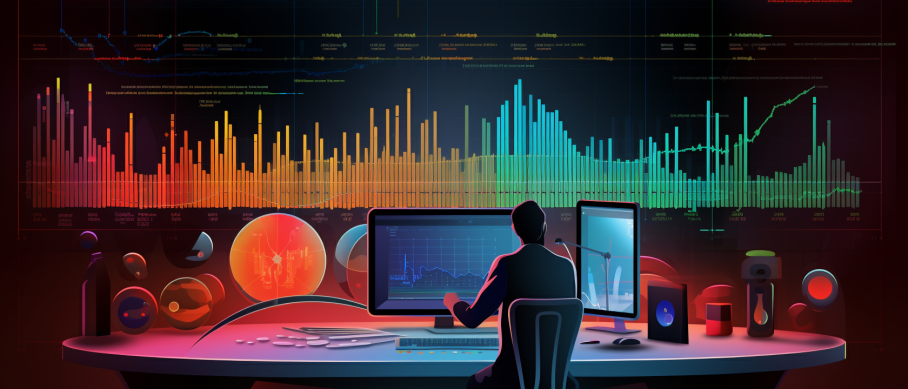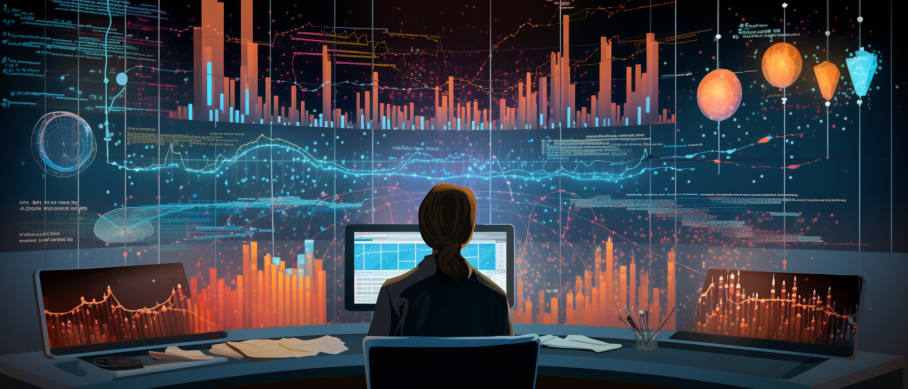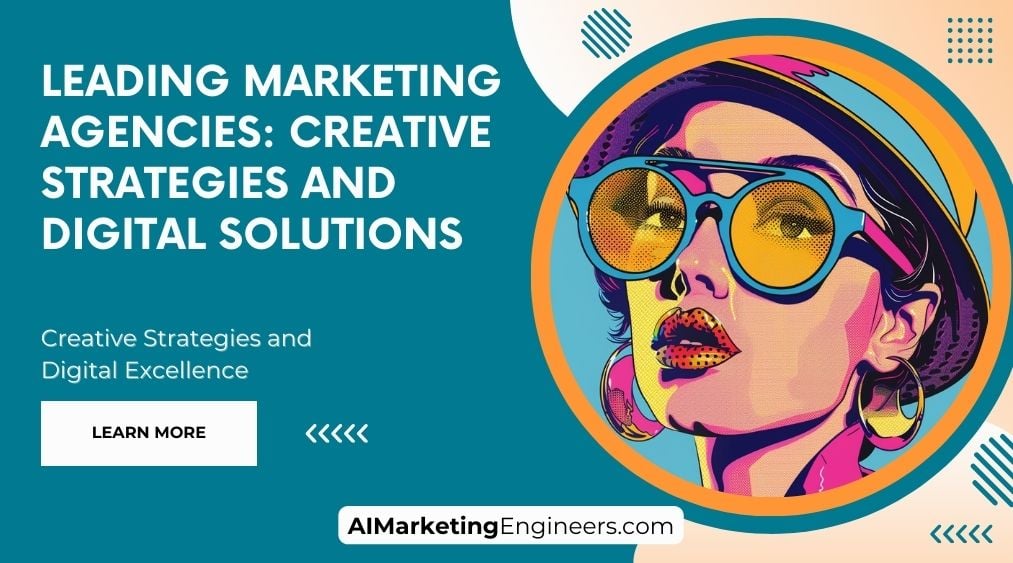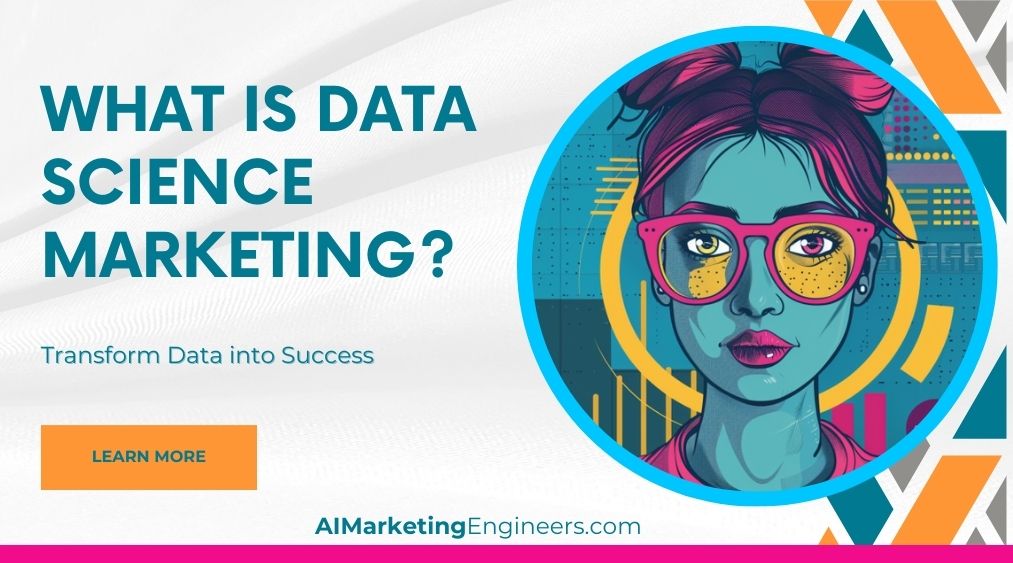Key Takeaways
✅ Understanding Data Science and Analytics: Grasp the full scope of data science and analytics, noting that it's not just about number crunching—it's about making data tell a story that drives smarter decisions. Did you know 53% of companies are adopting big data analytics to harness that power? Now, that's a tool you want in your belt!
✅ Interdisciplinary Skills: Data science isn't a one-trick pony; it's a rodeo. Picture this: you've got math, stats, programming, and business savvy all in your toolbox. It's a skill set that 72% of businesses say is vitally important for their operations. Ready to roll up your sleeves and dive in?
✅ Real-World Impact: Ever wonder how Netflix knows what you want to watch next? That's data analytics at its finest—understood through patterns and trends. It's this kind of smart data use that can reduce costs for companies by up to 60%, driving home efficiency in every industry from healthcare to retail.
Introduction
Ever felt like you're standing on the edge of a revolution, ready to dive into a world brimming with possibilities? That's what stepping into the realm of Data Science and Analytics is like. It's where business meets intelligence, where every piece of information holds the potential to ignite innovation.
Data Science and Analytics are your keys to unlocking a treasure trove of insights, but where do you start? Well, picture this: You're about to zip through this exciting landscape that's not only shaping the future—it's redefining how we make decisions today. We'll explore the blend of technology and business, and how it's transforming industries before our eyes.
So, are you intrigued by the idea of predicting customer behavior, or personalizing your business strategy to gallop ahead of the competition? If you nodded yes, then buckle up! You're in the right place. Stay with me, as we embark on this journey together—you'll find powerful strategies, real-life examples, and you may just discover that golden nugget of information that skyrockets your business or career. Let's get started, shall we?
Top Statistics
| Statistic | Insight |
|---|---|
| Global Data Science Platform Market Size: Valued at $59.84 billion in 2020, projected to reach $362.22 billion by 2028. (Source: Fortune Business Insights) | The impressive market growth showcases the expansion of data-driven solutions across industries. It's a gold rush for tech-savvy companies and the stubborn ones might just miss out. |
| Big Data Analytics Market Growth: Expected to grow at a CAGR of 13.5% from 2021-2028. (Source: Grand View Research) | The steady demand for analytics indicates businesses are not just collecting data, but also eager to make sense of it. The message is clear: the more you know, the better you grow. |
| Data Scientists on LinkedIn: Over 587,000 professionals in January 2021, a 650% increase since 2012. (Source: LinkedIn Workforce Report) | This number mirrors growing career interests and the competitive edge businesses can gain with the right data wizards on their teams. Imagine the magic they can conjure with data in hand! |
| Median Age of Data Scientists: Around 29 years old, with a majority holding a master's degree or higher. (Source: Kaggle State of Data Science and Machine Learning Report) | Talk about a young field – the age reflects a new generation shaping the future of technology and business. These young minds are not just learning; they're revolutionizing how we make decisions. |
| AI and ML Center of Excellence: By 2025, more than half of large organizations will have a dedicated center. (Source: Gartner) | This prediction underscores the strategic importance of artificial intelligence and machine learning. Companies are going in guns blazing to harness these futuristic tools. |
Data Science: The Treasure Hunt for Insights
Have you ever felt like you were sifting through a pile of puzzle pieces, trying to piece together a story that makes sense? That’s what data science is in its core. It's about turning chaos into clarity, taking jumbles of numbers, and finding the patterns that tell us something useful. Data scientists are the modern-day treasure hunters, armed not with shovels and maps, but with statistics, programming skills, and a knack for machine learning. These adventurers are in high demand because the treasures they discover can lead to groundbreaking insights and real-world solutions.
Analytics: Transforming Data into Actionable Information
Have you ever faced a jumble of digits on a screen and felt like you're trying to read an alien language? That's where analytics comes in. It's about turning that confusing number spaghetti into clear insights. Imagine being able to look at sales data and predict which products will fly off the shelves next month. That's the power of analytics, sometimes acting like a time machine.
Here's the thing: to bring data to life, you need the right tools. Think about visualization tools that make complex data look like a compelling storybook, or predictive modeling software that forecasts trends as if you're gazing into a crystal ball. And ever heard of natural language processing? That's like teaching a computer to understand our yammer so we can get answers from data without getting our hands dirty.

Applications of Data Science and Analytics
Curious about who's wielding this number-crunching power? It's far-reaching. Take healthcare institutions, for example, using data to predict disease outbreaks or tailor treatments. Or consider financial institutions detecting suspicious activities to protect your hard-earned money. Even the corner store owner uses data to stock your favorite chips just when you crave them.
Remember childhood tales where the hero had a secret weapon? Data is that weapon in countless real-world stories, helping businesses not just survive, but thrive. The practical applications of data are endless, from optimizing delivery routes to personalizing online shopping experiences – talk about being in the right place at the right time!
Challenges and Opportunities in Data Science and Analytics
Navigating the world of data isn't always a walk in the park. Ever heard someone groan about data cleaning? It's the not-so-glamorous part of the job, making sure all that data makes sense together. And then there's the elephant in the room – privacy concerns. Finding the balance between harnessing data and respecting individual rights is one of the biggest challenges.
On the flip side, the future's ripe with possibilities. As technology evolves, we’re looking at a horizon brimming with opportunities to innovate and unearth new discoveries. For those ready to embrace the challenge, the world of data is like a playground with slides and swings in the form of new technologies and analytical approaches.

Career Paths in Data Science and Analytics
Did you ever dream of being a knight in shining armor? In the world of data, data scientists and analysts are our modern-day champions. They're the brave souls who make sense of vast data oceans every day by discovering patterns and insights.
But be warned, it's not just about loving numbers. You'll need a healthy dose of curiosity and the drive to continually learn because this field changes faster than fashion trends. If you're keen, there's a path for you, whether it's as a data engineer building the infrastructure, a business intelligence analyst translating data into decisions, or a machine learning engineer teaching computers to think. The key? Never stop learning.
Embarking on a journey in data science and analytics is like signing up for an adventure where the learning never stops. It's a realm where curiosity meets critical thinking, and where the brave can make a profound impact on our world. Are you ready to step into the story?
Do not oversimplify. Just stay on top.
It's all about making sense of the numbers – that's what data science and analytics are there for. But let's cut to the chase – you need a game plan. Here are three tips to get you started:
1. Ask the Right Questions: Before diving headfirst into data, take a second to consider what you want to find out. Are sales dropping because people don’t like your product anymore, or is it something simpler like a website glitch? The answer to this question will guide your analysis and help you turn those intimidating numbers into actionable insights.
2. Keep It Straightforward: Love them or hate them, spreadsheets are a marketer's best friend. But let's not complicate things. Stick to easy-to-understand metrics that matter to your business. Think sales trends, customer retention rates, and cost per lead. And remember, the goal is to uncover insights, not to win a Nobel prize in Mathematics.
3. Create A Story From The Stats: Numbers on their own can be pretty lifeless. It’s like reading a book with nothing but footnotes. Turn that data into a story. Why are sales peaking in May each year? Could it be those annual spring promotions? Use the data to narrate what's happening in your business, and suddenly, all those charts and graphs become a lot more interesting.

Conclusion
Let's take a moment to think about everything we've journeyed through together. Data science and analytics, what does it all really mean for you and me? It's not just numbers and charts; it's the story of our world, translated from data into decisions that shape our daily lives. From the way our favorite products are marketed to us, to how healthcare is delivered, it touches nearly every aspect of our existence.
But it's not all smooth sailing, is it? We've seen that as much as there are breathtaking possibilities, like predicting what will be the next big thing that's going to change our lives, there are also real challenges. How do we protect people's privacy? How do we make sure the data we use is clean and trustworthy? Data quality and privacy concerns stand tall like watchmen, reminding us that with great power comes great responsibility.
For those willing to navigate these waters, the career paths are as diverse as they are rewarding. Whether you're a data scientist unlocking patterns like a digital-age detective, or an analyst translating data points into strategies, your contributions are invaluable. But remember, it's a field that never stands still. Continuous learning is your ticket to staying relevant and making a difference.
As we wrap up, think about the impact of data science and analytics on your life. Maybe it's a hidden passion of yours waiting to burst forth, or perhaps a field you're already a part of. Either way, the future is exciting—with innovation just over the horizon. So, what's your next step? Will you be part of the journey to unlock the full potential of data? The key to this power is in your hands, and the time to act is now.

FAQs
Question 1: What is Data Science?
Answer: Data science is an interdisciplinary field that combines statistical methods, algorithms, machine learning principles, and programming skills to extract insights from structured and unstructured data sets. It involves cleaning, manipulating, analyzing, and interpreting data to make informed decisions or predictions.
Question 2: What is the difference between Data Science and Analytics?
Answer: Data science focuses on using advanced algorithms, machine learning techniques, and predictive models to extract insights from data. In contrast, analytics involves analyzing historical data to identify patterns, trends, and correlations that can inform decision-making processes. While they share similarities, data science emphasizes more complex methods and future predictions, whereas analytics primarily deals with past performance analysis.
Question 3: What skills do I need to become a Data Scientist?
Answer: To become a successful data scientist, you should possess strong mathematical and statistical knowledge, proficiency in programming languages like Python or R, experience working with databases and big data tools, familiarity with machine learning frameworks, and excellent communication and storytelling abilities to present findings effectively.
Question 4: How does Data Science differ from traditional Business Intelligence (BI)?
Answer: Traditional BI mainly focuses on reporting and visualizing historical data to make informed decisions based on past events. On the other hand, data science employs advanced techniques such as predictive modeling, natural language processing, and deep learning to uncover hidden relationships within the data and forecast future outcomes.
Question 5: Can Data Science be used across different industries?
Answer: Yes, data science can be applied across various industries, including healthcare, finance, retail, marketing, transportation, and more. It helps organizations make informed decisions based on insights extracted from their data, leading to improved operations, enhanced customer experiences, and increased profitability.
Question 6: What tools do Data Scientists use?
Answer: Some popular tools used by data scientists include Python (with libraries like NumPy, Pandas, Scikit-learn), R programming language, SQL databases, machine learning frameworks (TensorFlow, PyTorch), big data processing platforms (Hadoop, Spark), business intelligence software (Tableau, Power BI), and cloud computing services (AWS, Azure).
Question 7: How does Data Science contribute to Artificial Intelligence (AI)?
Answer: Data science forms the foundation of AI applications. By using statistical methods, algorithms, and machine learning techniques, data scientists develop models that enable machines to learn, adapt, and perform tasks that typically require human intelligence, such as image recognition, natural language understanding, and decision-making processes.
Question 8: Is there a demand for Data Scientists and Analysts?
Answer: Yes, the demand for skilled professionals in data science and analytics continues to grow rapidly due to the increasing volume of data generated by companies worldwide. According to Glassdoor's Best Jobs in America report, Data Scientist has been ranked among the top jobs for several years now.
Question 9: Can I transition into Data Science without prior experience?
Answer: Yes, you can transition into data science even if you don't have prior experience. However, it requires dedication, self-learning, and hands-on practice to acquire the necessary skills and knowledge. Online courses, bootcamps, and certifications can help you build a solid foundation and kickstart your career in data science.
Question 10: What are some common challenges faced by Data Scientists?
Answer: Some common challenges include managing large, complex data sets, ensuring data quality and integrity, overcoming biases in machine learning models, communicating insights effectively to non-technical stakeholders, staying updated with emerging technologies, and balancing privacy concerns while extracting valuable information from sensitive data.

Academic References
- Gray, J. (2009). The Fourth Paradigm: Data-Intensive Scientific Discovery. Microsoft Research. This seminal book lays the groundwork for how we think about data's role in science, sparking a shift towards an era where analysis and big data drive discoveries you'd never think were possible.
- James, G., Witten, D., Hastie, T., & Tibshirani, R. (2013). An Introduction to Statistical Learning: With Applications in R. Springer-Verlag. In this introduction that's become almost a bible for starters, our four guides hold our hands through the maze of statistical and machine learning methods that form the backbone of data science.
- Mayer-Schönberger, V., & Cukier, K. (2013). Big Data: A Revolution That Will Transform How We Live, Work, and Think. Houghton Mifflin Harcourt. Here's a portal to understanding how big data isn't just about the bytes but has real power to change our lives in ways we're only beginning to understand.
- Mishra, N., & Tattar, P. N. (Eds.). (2015). Handbook of Statistics: Data Mining and Data Visualization. Elsevier. The editors of this handbook serve up a feast of data mining and data visualization topics, with practical cases from different domains to show how it's all applied in the real world.







